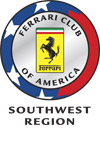
California Speedway History
courtesy California Speedway

Speed and close racing aren?t necessarily the issues when fans and racers discuss the California Speedway. In its brief three-year history, the $120-million state-of-the-art facility has made its mark in motorsports as a home to CART, IRL, NASCAR, the Grand Am road racing and the AMA U.S. Superbike series.
Those in attendance have not only been treated to great racing, but to some of the best creature comforts known to exist. How many speedways can boast of a train station, concierge services or hot showers? Luxury suites offer breath-taking views of not only the speedway and its manicured-grounds, but of the San Gabriel Mountains and San Bernardino Valley. In its short existence, California Speedway has developed a reputation of offering the best for not only its fans but competitors.
Henry J. Kaiser and Roger Penske, are two men who have left their mark on history by utilizing the same 529 acres in Fontana, California. With Kaiser, Fontana was recognized as the home of Kaiser Steel, the first integrated steel mill west of the Rockies. Built during World War II, just outside the projected range of Japanese battleships, the mill provided steel necessary for the construction of Liberty ships. Kaiser Steel, at one point, was the economic hub of the area, employing a work force of more than 11,000. But on Dec. 31, 1983, Kaiser Steel went bankrupt and closed forever.
The site was abandoned and became an eyesore, rubble and rust dominating the landscape. Movie production replaced steel as the money product. That changed 10 years later when Kaiser Ventures Inc. and Penske Corporation exchanged thoughts about a speedway. An agreement was reached in early 1995 and there were already indications this project was about speed.
Before construction started, NASCAR and CART gave the track dates for the 1997 season. San Bernardino County put the project on the fast track, effectively eliminating bureaucratic roadblocks in the permit process. Within months, the transformation of blighted site to speedway was underway. More than 21,000 tons of hazardous waste was removed and 370 tons of coal tar was recycled.
When Kaiser won the The Governor?s Award for Environmental and Economic Leadership, the speedway project had a green flag. On Nov. 22, 1995, a work force that numbered in the thousands began demolition and construction at the same time.
